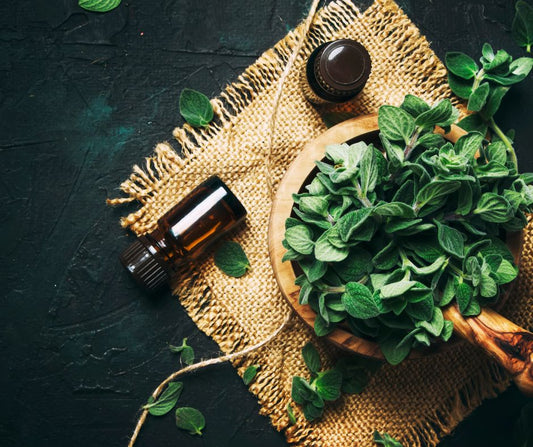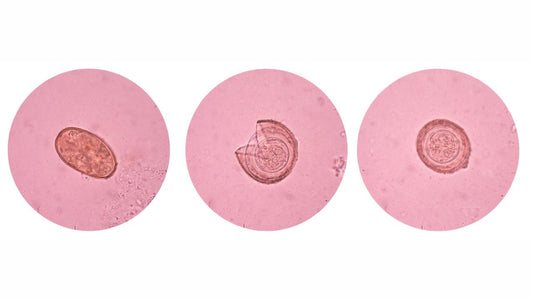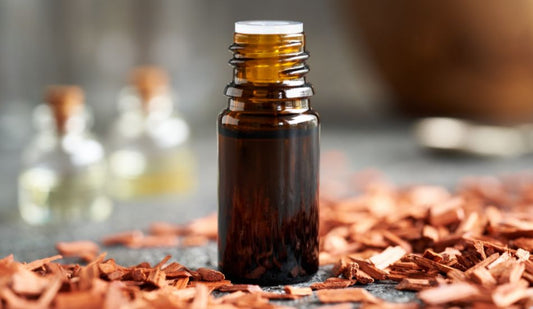
Matcha – The Green Treasure for Well-being: History, Benefits, and Uses
Share
What is matcha? – The green gold powder of the tea bush
Matcha is finely ground green tea made from leaves grown in the shade of the Camellia sinensis tea bush. Shade cultivation increases the chlorophyll content of the leaves and gives matcha its characteristic deep green color. The leaves are dried and ground with stone mills, producing a velvety soft powder that is mixed with hot water to make a drink. Unlike traditional green tea, matcha is consumed as the whole tea leaf, making it superior in terms of nutrients.
The fascinating history of matcha – From Zen Buddhism to a modern superdrink
Matcha's history goes back over a thousand years to China's Tang dynasty, when powdered tea was used both as a drink and part of rituals. Matcha arrived in Japan in the 1100s with the Zen Buddhist monk Eisai, who brought seeds and tea rituals. Zen monks valued matcha for its ability to promote concentration and peace of mind during meditation. Later, matcha became part of the Japanese tea art (chanoyu), emphasizing harmony, respect, and simplicity.
Today, matcha has conquered the world as a superfood that combines tradition and modern wellness trends. Its versatile benefits and easy use make it popular among health enthusiasts and coffee culture fans alike.
Matcha's benefits for well-being – Why is matcha the king of superfoods?
Rich in antioxidants
Matcha is one of the most potent sources of antioxidants. Its catechins, especially epigallocatechin gallate (EGCG), help combat cell damage caused by free radicals and support the immune system.
Focused concentration and peace of mind with L-theanine
Matcha's natural L-theanine, an amino acid, promotes relaxation without drowsiness. It helps improve concentration and reduce stress levels, making matcha an ideal drink for a busy daily life.
Natural energy boost without sudden fatigue
Matcha contains caffeine, but its effect is smoother than coffee. L-theanine and caffeine together provide sustained energy without sudden spikes and crashes.
Supports metabolism and skin health
Matcha catechins can support metabolism and fat burning, and its high antioxidant content helps keep the skin youthful and glowing.
Nutritional perspective – What does matcha contain?
Vitamins and minerals
Matcha is an excellent source of vitamins A, C, E, and K as well as iron, potassium, and calcium. These nutrients support bodily functions and overall wellness goals.
High chlorophyll content
Chlorophyll gives matcha its deep green color and helps cleanse the body. It acts as a natural detox agent that may help remove harmful substances from the body.
Health-beneficial catechins
Catechins are polyphenols that promote heart health, support the immune system, and may help lower cholesterol.
How to use matcha – From drinks to desserts
Classic matcha tea
Traditional matcha is made by whisking tea powder into hot water with a bamboo whisk. This method brings out matcha's natural aromas and gives a velvety, smooth mouthfeel.
Matcha latte, a favorite of modern café culture
Matcha latte combines matcha and milk into a soft and delicious drink. You can choose traditional milk or a plant-based alternative like oat or almond milk. Prepare it with heated milk or a plant-based option, like tea.
Baked goods, smoothies, and other creative recipes
Matcha can also be added to baked goods such as cakes, cookies, and pancakes. Its nuanced flavor and beautiful color make it a favorite also in smoothies and ice creams.
- Try, for example, Matcha macarons with coconut cream
Incorporating Matcha into Everyday Life – How to Start
When starting to use matcha, it is important to choose a high-quality powder that is bright green and fresh-smelling. Prefer organic. Try different preparation methods and find your favorite. Whether your choice is traditional tea or modern matcha latte, this versatile drink brings both health and enjoyment to every day.







